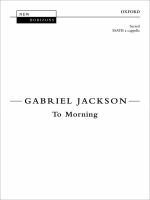Two for One

Product code:
Description
Two for One brings together two impressive and inventive pieces for the intermediate double bassist. Each has a strong rhythmic momentum, exploring a wealth of colours and timbres across the solo register of the double bass, and combining technical and musical skills in equal measure. Ideal for any recital or audience.
1. Satie’s Satire for Satyrs
Written for the Syrinx Project in celebration of the centennial of Claude Debussy, Satie’s Satire for Satyrs is a nod to the special relationship between Claude Debussy and Eric Satie. The first section evokes the playful dance of Pan, with a mocking demeanour, utilising repetitive rhythmic and formal concepts from the Neo-classical movement. The middle section is played slower, with hints of Debussy’s chromaticism and the symmetrical harmonic idiom of Impressionism.
Satie’s Satire for Satyrs ends with a reprise of the first section, much as the piece, Syrinx, which inspired this project.
2. Vitruvian
Vitruvian, written for Da Vinci 500, a celebration of the great Renaissance artist, scientist, and inventor, Leonardo Da Vinci, was created by juxtaposing the circle of fifths over Da Vinci’s “Vitruvian Man.”
The resulting pitch collection yields an axis of symmetry centreed on F sharp, with a minor third in either direction, and continuing a four-note chromatic cell on either side. Essentially, C, D-flat, D Natural, E-flat—F#—A, B-flat, B natural, and C. The style, in a nod to Da Vinci’s Italian heritage, is that of a tarantella.
The piece should be performed aggressively, with a short, staccato bordering on spiccato stroke, unless otherwise specified. The challenge for the performer is allowing the notes in the lower register to speak clearly in several dynamic ranges. [Programme notes by Adam Booker]
Description
Two for One brings together two impressive and inventive pieces for the intermediate double bassist. Each has a strong rhythmic momentum, exploring a wealth of colours and timbres across the solo register of the double bass, and combining technical and musical skills in equal measure. Ideal for any recital or audience.
1. Satie’s Satire for Satyrs
Written for the Syrinx Project in celebration of the centennial of Claude Debussy, Satie’s Satire for Satyrs is a nod to the special relationship between Claude Debussy and Eric Satie. The first section evokes the playful dance of Pan, with a mocking demeanour, utilising repetitive rhythmic and formal concepts from the Neo-classical movement. The middle section is played slower, with hints of Debussy’s chromaticism and the symmetrical harmonic idiom of Impressionism.
Satie’s Satire for Satyrs ends with a reprise of the first section, much as the piece, Syrinx, which inspired this project.
2. Vitruvian
Vitruvian, written for Da Vinci 500, a celebration of the great Renaissance artist, scientist, and inventor, Leonardo Da Vinci, was created by juxtaposing the circle of fifths over Da Vinci’s “Vitruvian Man.”
The resulting pitch collection yields an axis of symmetry centreed on F sharp, with a minor third in either direction, and continuing a four-note chromatic cell on either side. Essentially, C, D-flat, D Natural, E-flat—F#—A, B-flat, B natural, and C. The style, in a nod to Da Vinci’s Italian heritage, is that of a tarantella.
The piece should be performed aggressively, with a short, staccato bordering on spiccato stroke, unless otherwise specified. The challenge for the performer is allowing the notes in the lower register to speak clearly in several dynamic ranges. [Programme notes by Adam Booker]



